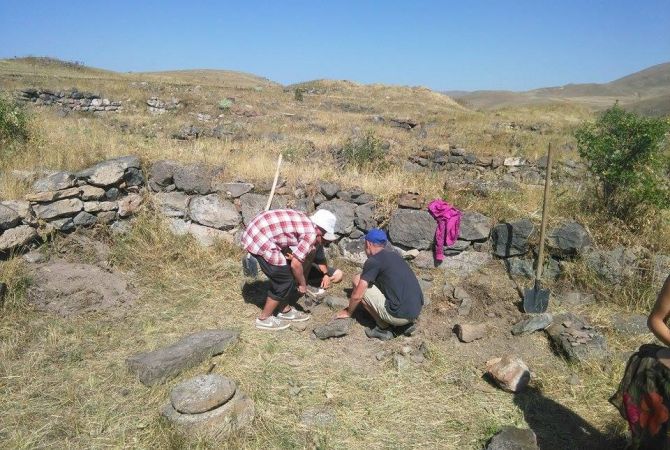Hogmik excavations reveal new secrets about heathen Armenia traditions
 11:00, 18 August, 2015
11:00, 18 August, 2015GYUMRI, AUGUST 18, ARMENPRESS. Hoghmik village in Amasia of Shirak province continues to draw the attention both of Armenian and foreign archaeologists. The village was named Hoghmik in 1978 and remains a rich territory for archaeological expeditions. Not so far from the village, on the southwestern part, a fragment of a big residence of the Hellenistic Period was discovered. Hogmik complex was constructed during the rule of king Artashes II (20 BC-30 BC).
Archaeological excavations in the territory were carried out in Soviet times in 1987 by the expedition of the Institute of Archaeology of the National Academy of Sciences of Armenia led by Hayk Hakobyan who without knowing about its archeological value arrived in Hoghmik to study the area before Kaps reservoir construction. The heathen complex was occasionally discovered during the studies.
The expeditions group’s excavations of various years include idols, altars, bones etc. The latter give a clear idea about traditions of pagan period. The area were divided into parts, “rooms” as the archeologists name them, that had their own altars where burial and scarification rites were carried out.
Moreover, the studies show that in heathen Armenia corpse dissections of both animals and humans were done. Corpse dissection was also met in Hoghmik child tombs. “Different child parts were discovered there, which witnesses that a corpse dissection rite was done. After death the body was divided into parts as people thought that once something is divided, it will reunite again one day”, said Hayk Hakobyan.
Armenuhi Mkhoyan